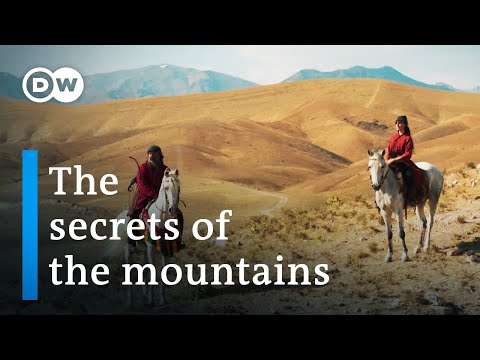
Nestled between the realms of ancient civilization and modernity, Iran’s landscape offers a breathtaking tapestry that weaves historical grandeur with natural wonder. Among its most striking features are its mountains, which not only dominate the country’s topography but also form an essential part of its cultural and environmental identity. The DW Documentary “Iran from Above – In the Mountains” takes viewers on a spectacular aerial journey, exploring these rugged terrains from a perspective rarely seen.
### The Peaks of Diversity
Iran is home to several mountain ranges, including the Alborz and the Zagros, which stretch across the country’s northern and western borders respectively. These mountain ranges are not just physical barriers or mere geographical features; they are pivotal in shaping the climate patterns, agricultural practices, and biodiversity of the region.
The Alborz range, culminating at Mount Damavand – a potentially active volcano and Iran’s highest peak at 5,610 meters – is steeped in Persian folklore and history. It forms a climatic barrier between the Caspian region’s lush forests in the north and the arid central plateau. Meanwhile, to the west, the Zagros mountains influence traditional lifestyles such as nomadic herding while containing ecosystems that range from forested areas to barren rock faces.
### A Cultural Reservoir
As “Iran from Above – In the Mountains” vividly captures, these mountains are more than natural sculptures; they are repositories of cultural heritage. Inhabited for millennia, they have been witnesses to numerous civilizations’ rise and fall. Each community here has adapted uniquely to their vertical world – from terraced agriculture pioneered by early settlers to adapted village architectures clinging precariously on slopes.
For instance, in regions like Lurestan or Kurdistan nestled within these ranges, traditional songs tell tales of heroes who traversed these heights with ease. The documentary explores how these cultural expressions are intertwined with highland life illustrating resilience against harsh climates.
### Environmental Significance
The documentary does not shy away from addressing environmental concerns. Iran’s mountains play a critical role in sustaining local water cycles through glaciation cycles and acting as water reservoirs for streams that irrigate lowlands enabling agriculture in otherwise arid regions.
However, climate change poses an undeniable threat with receding glaciers on mountains like Damavand raising alarms about future water security. Overgrazing and deforestation also threaten delicate ecosystems unique to this high altitude environment.
### Challenges of Modernity
Modern challenges intertwine seamlessly as “Iran from Above – In The Mountains” shows viewers roads carved into once-inaccessible terrain bringing both opportunities and threats. While tourism has helped some villages thrive economically for others it brings an unsettling change disrupting traditional lifestyles and potentially harming fragile ecosystems.
### Conclusion: A View From Above
DW’s “Iran from Above – In The Mountains” offers more than stunning visuals; it provides insight into how geography shapes cultural identities over time while highlighting pressing environmental issues facing these ancient strongholds today. This documentary appeals not only to those interested in geography but also those captivated by how human cultures adapt to extreme environments over centuries retaining unique traditions while facing modern challenges head-on.
